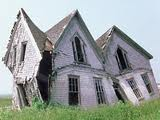
A minor problem now can become a major, and expensive, problem down the road.
Although home sellers may not always disclose the whole truth about the condition of their home, you most likely aren’t interested in paying for a professional inspection at every house you tour. There are several key areas that every buyer should pay close attention to when viewing prospective homes. Taking extra time to investigate these areas before you sign on the dotted line may help to waste time on a home that needs too much work or worse having to spend thousands of unwanted dollars after the purchase of your new home. Here is a list of some things to look out for:
Foundation Cracks. Examine the foundation from the outside and inside, too, if accessible. Look for horizontal cracks or any cracks bigger than one-third of an inch, which could mean serious structural problems. If the yard slopes toward the house, look for signs of water damage in the basement.
Bad or Strange Odors. Pay attention to smells in each room of the house, and even on the outside of the house. Cigarette smoke and pet odors can be difficult to hide. If a home smells heavily of cleaning products (especially bleach) or deodorizers, the seller may be trying to cover up a stinky situation.
Mildew and Mold. Check for signs of mold on basement walls and in laundry rooms. White or green colonies of mold can also indicate excessive water in the crawl space or basement. This can mean that soil needs to be brought in around the foundation to keep the water sloping away from the house.
Roof. Look for defective roofing and/or flashings, missing or falling shingles, curling shingles, flat spots in the roof that trap water, and low slope roofs that have shingles.
Weak Water Pressure / Old Plumbing. Check the water pressure by running the bathroom sink and flushing the toilet at the same time. Low water flow may indicate plumbing problems, such as corroded pipes that need to be replaced. New pipes can run as high as $15,000 in a typical 1,500-square-foot home.
Ceiling and Wall Stains. Water stains in a bathroom may indicate the shower or sink is leaking and needs to be re-caulked. It could also require ripping out tile and replacing the shower pan, which costs around $1,500 or having a plumber come in to repair the sink. Most roof leaks that come from the ceiling could be a result of neglected flashings that seals “valleys” in the roof or around a chimney or vents, which may cost up to $500. But roof leaks may also mean it is time to replace shingles, which could cost in the thousands of dollars. You may also want to take a look in the attic for broken trusses that could be causing leaks.
Doors That Don’t Close. If more than one door won’t close or swings open by itself, it may indicate a structural issue, such as a foundation that has settled or framing that is deteriorating.
Locked Doors. Inquire about any doors that are locked or marked “off limits” during your home tour. The homeowners may be trying to hide something.
Old or Faulty Wiring. Ensure all the switches and outlets in the house function properly. Flickering lights, circuits that don’t work and hot outlets or faceplates are all symptoms of wiring problems. Electrical needs for today’s appliances and electronics may exceed the capacity of homes built as little as 10 years ago. You may end up spending $2,500 or more to have an electrician update the electrical system.
Non-functioning Windows. Open and close all windows. Feel for irregular or large pockets of air drafts. Check for cracks and water in between double-paned windows.
If you enter negotiations to buy a house in Mississauga area, it is wise to always put in a condition on having a professional inspect the home for minor and major problems. Even brand new houses can have problems that the builder has overlooked. A minor problem now can become a major, and expensive, problem down the road. Most of these problems can be repaired, but depending on the specific problem; the cost can be substantial, which makes it the deciding factor in whether you ultimately buy the house.

